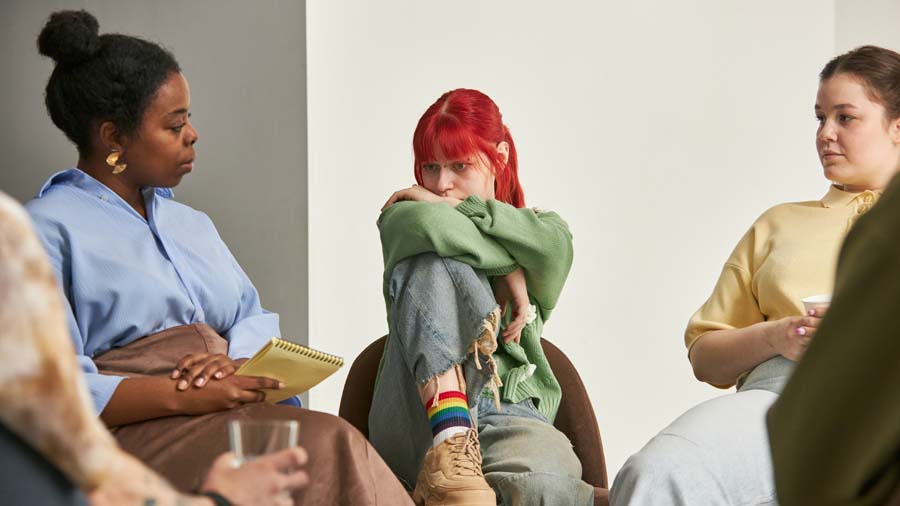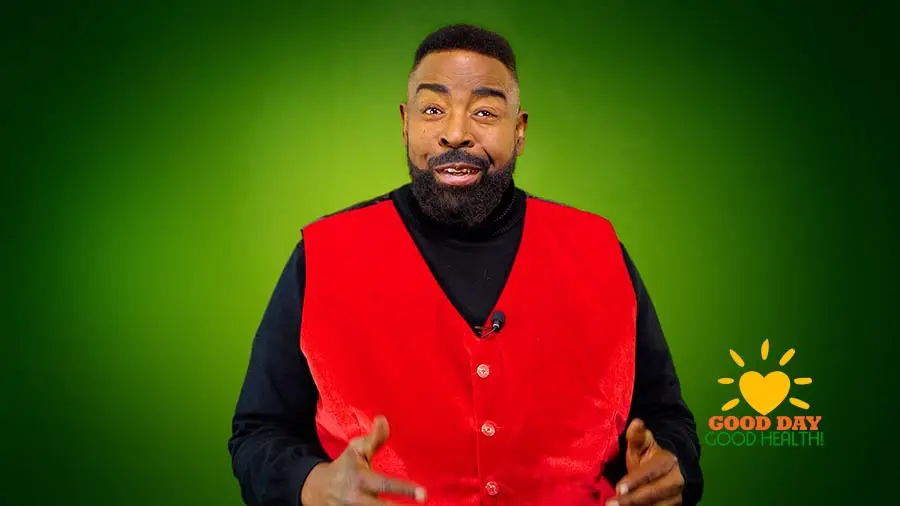Now Reading: Suicide Prevention Awareness Month: Breaking the Silence, Building Hope
-
01
Suicide Prevention Awareness Month: Breaking the Silence, Building Hope
Suicide Prevention Awareness Month: Breaking the Silence, Building Hope

Every September, Suicide Prevention Awareness Month invites us to shine a light on one of the most urgent yet often unspoken health challenges of our time. It’s a time to break down the stigma surrounding mental health struggles, to honor those we’ve lost, and to equip ourselves and our communities with the knowledge and tools to prevent tragedy.
For Good Day, Good Health, this isn’t just another observance on the calendar—it’s a call to action. Health isn’t only about the body; it’s deeply connected to the mind, the heart, and the hope we carry into each day.
In this feature, we’ll explore the scope of suicide in America and globally, examine the underlying factors, highlight prevention strategies, share stories of resilience, and offer practical ways you—and all of us—can help save lives.
The Scope of the Crisis
Suicide remains one of the leading causes of death worldwide. According to the World Health Organization (WHO), more than 700,000 people die by suicide every year—that’s one person every 40 seconds. In the United States, the Centers for Disease Control and Prevention (CDC) reported over 49,000 suicide deaths in 2022, the highest number on record.
Behind every statistic is a story: a family forever changed, a community left grieving, a life cut short that might have been saved with the right support at the right time.
What’s particularly sobering is that suicide doesn’t discriminate. It affects young people, older adults, veterans, LGBTQ+ individuals, caregivers, professionals, parents—people from every walk of life. And yet, while the risk factors are diverse, the common threads of stress, isolation, stigma, and lack of accessible care tie many of these stories together.
Understanding the Risk Factors
Preventing suicide begins with understanding the complex interplay of risk factors. While no single cause exists, experts identify several overlapping contributors:
- Mental Health Conditions: Depression, anxiety, bipolar disorder, PTSD, and substance use disorders can elevate risk when left untreated.
- Chronic Stress & Trauma: Job loss, financial strain, abuse, or long-term caregiving burdens can erode resilience.
- Physical Health Challenges: Chronic illness, pain, or disability often intensify feelings of hopelessness.
- Social Isolation: Disconnection from family, friends, or community networks is a powerful driver of despair.
- Access to Means: Easy access to firearms or medications dramatically increases the likelihood of suicide attempts being fatal.
It’s important to remember: risk is not destiny. Many people live with risk factors and never attempt suicide. That’s why awareness, intervention, and support are so crucial—they tip the balance toward hope and healing.
Breaking the Stigma
One of the greatest barriers to suicide prevention is silence. For decades, mental health struggles were whispered about, brushed aside, or hidden in shame. People feared being judged, labeled “weak,” or misunderstood.
But silence kills.
Studies show that talking openly and responsibly about suicide reduces stigma, encourages help-seeking, and helps people feel less alone. When celebrities like Simone Biles, Dwayne “The Rock” Johnson, or Lady Gaga share their experiences with depression and mental health care, they normalize the conversation.
For everyday people, it can be as simple—and as powerful—as saying:
- “I’ve been struggling, too.”
- “It’s okay to talk about how hard things feel.”
- “You don’t have to go through this alone.”
Warning Signs to Look For
Knowing the warning signs can make the difference between life and death. While every situation is unique, some common red flags include:
- Talking about wanting to die or feeling like a burden
- Withdrawing from friends, family, or activities
- Sudden changes in mood, especially calmness after deep despair
- Giving away possessions or making final arrangements
- Increased use of alcohol or drugs
- Expressions of hopelessness or having no reason to live
Trust your instincts: if something feels “off” about someone you know, take it seriously. It’s far better to check in and be wrong than to stay silent and regret it later.
What You Can Do: Practical Steps for Prevention
Suicide prevention is not solely the job of mental health professionals. Every one of us has a role to play. Here’s how:
1. Start the Conversation
Ask directly but gently:
- “I’ve noticed you’ve seemed down lately. Are you thinking about suicide?”
Contrary to myth, asking doesn’t “put the idea” in someone’s head—it shows you care.
2. Listen Without Judgment
Don’t rush to fix. Don’t minimize their pain. Simply listen. Sometimes, being heard is the first step toward hope.
3. Connect to Resources
Encourage them to contact the 988 Suicide & Crisis Lifeline in the U.S., which provides 24/7 support. Offer to help them find a therapist, doctor, or support group.
4. Remove Immediate Dangers
If someone is in imminent risk, don’t leave them alone. Remove access to firearms, sharp objects, or medications. Call 911 if necessary.
5. Check In Regularly
Healing takes time. A simple text—“Thinking of you today”—can make a big difference.
Stories of Resilience
While suicide takes lives, stories of survival and resilience remind us that recovery is possible.
Take Kevin Hines, who survived a jump from the Golden Gate Bridge. Today, he’s a global speaker and advocate, proving that even in the darkest moments, lives can turn around.
Or the countless veterans who found healing through peer support groups, therapy, and community engagement.
Or everyday people who share on social media how therapy, medication, faith, exercise, or connection pulled them back from the brink.
These stories matter because they shift the narrative: suicide is not inevitable. Hope and healing are possible.
Prevention in Action: Community and Policy
On a larger scale, suicide prevention requires systemic changes:
- Access to Care: Expanding mental health services, especially in underserved areas, is critical.
- School Programs: Teaching students coping skills, resilience, and peer support can save young lives.
- Workplace Initiatives: Companies that offer Employee Assistance Programs (EAPs), mental health days, and stigma-free policies support their teams.
- Policy Advocacy: Pushing for affordable healthcare, responsible gun legislation, and funding for mental health services makes prevention possible at scale.
The Role of Lifestyle and Whole-Body Health
Because Good Day, Good Health believes in a holistic approach, it’s important to highlight how everyday habits play into mental well-being:
- Exercise: Regular movement reduces depression and anxiety.
- Nutrition: Diets rich in whole foods, omega-3s, and balanced nutrients support brain health.
- Sleep: Quality rest helps regulate mood and decision-making.
- Connection: Friendships, family time, and community groups provide protective buffers.
These aren’t substitutes for therapy or medical care, but they’re powerful complements.
For Families and Friends
Supporting someone at risk can feel overwhelming, but remember: you don’t have to do it alone. Resources like NAMI (National Alliance on Mental Illness) offer guides and support networks for families.
What’s most important is consistency: being there, staying present, and reminding your loved one they matter.
Moving Forward With Hope
Suicide Prevention Awareness Month is about more than wearing ribbons or posting hashtags. It’s about action, awareness, and compassion.
If you are struggling: know that your life has value, your pain is not permanent, and help is available.
If you’ve lost someone: allow yourself to grieve, and seek support in survivor groups who understand your unique journey.
If you want to make a difference: speak openly, educate yourself, and check in with the people around you.
Together, we can shift the narrative from silence to support, from despair to hope, from loss to life.
Key Resources
- 988 Suicide & Crisis Lifeline: Dial or text 988 (U.S.)
- Crisis Text Line: Text HOME to 741741 (U.S.)
- NAMI HelpLine: 1-800-950-NAMI
- International: Find hotlines worldwide at https://findahelpline.com
Final Word
Health is not just about what we eat or how we exercise—it’s about the way we connect, endure, and heal. Suicide prevention is health care. Suicide prevention is community care. Suicide prevention is love in action.
This September, let’s not only raise awareness—let’s save lives.



